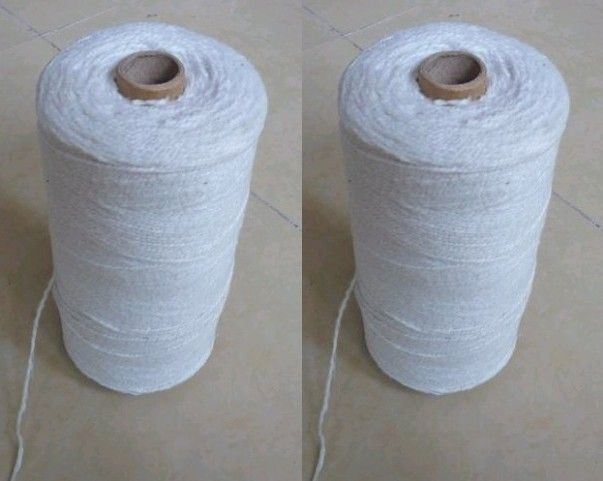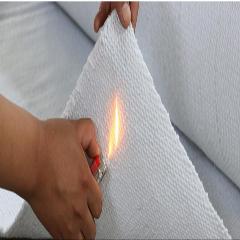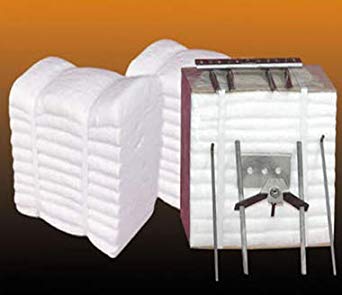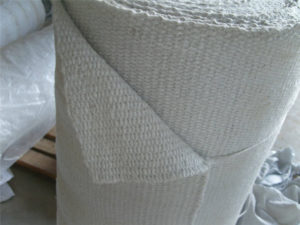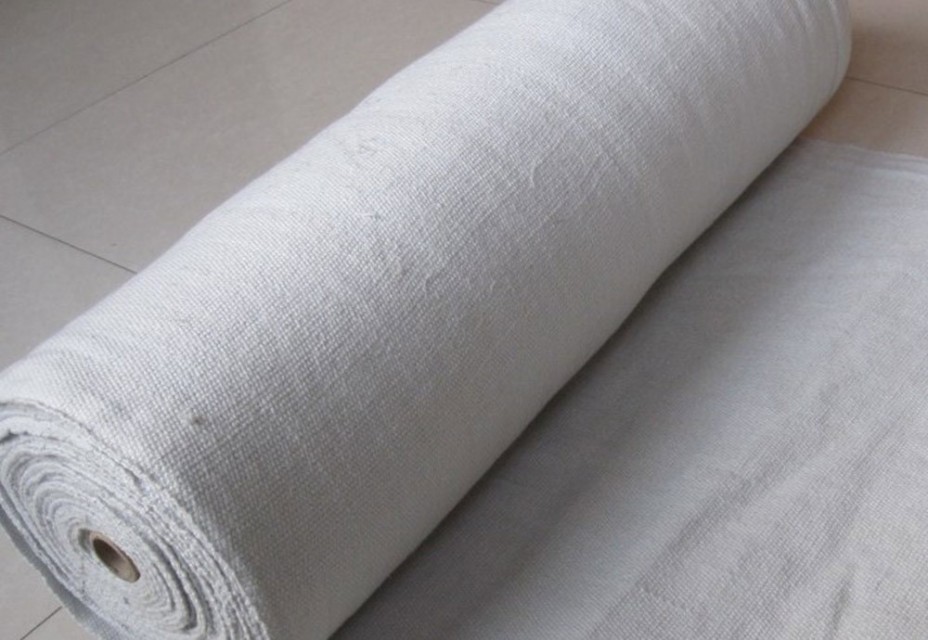Ceramic Fiber is a new type of fire-resistant insulation material with integrated fire resistance, heat separation and thermal insulation functions, containing no binding agent and maintains good tensile strength, toughness, and the fibrous structure when used in a neutral or oxidized atmosphere.
If you need industrial high temp insulation, the best option is to use ceramic fiber insulation. More specifically, if you require insulation for low heat storage and complete resistance to thermal shock, then you will want to use a ceramic fiber blanket.
CITIZEN COOLING SOLUTIONS LIMITED is one of the leading key suppliers of refractory ceramic fiber insulation products in the Kenyan Market. Products such as ceramic fiber blanket, Ceramic Fiber Ropes, Ceramic Fiber Tapes, Ceramic Fiber Modules, ceramic fiber board, and ceramic fiber paper are all used in industrial high-temperature insulation applications. Above all, our products exhibit high-temperature stability. Most noteworthy, temperatures up to 1430°C (2600°F). As a result, there are many benefits of ceramic fiber such as low thermal conductivity, low heat storage, excellent thermal shock resistance, lightweight, and superior corrosion resistance. Finally, ceramic fiber can be used for thermal processing in a great variety of high-temperature industries such as iron, steel, aluminum, copper, refinery, glass, cement, automotive, and industrial furnaces.
Below is a list of Citizen Cooling Solutions Limited Ceramic Fiber product lines:

1. Ceramic Fiber Blankets
2. Ceramic Fiber Rope & Braid
3. Ceramic Fiber Tape
4. Ceramic Fiber Cloth
5. Ceramic Fiber Yarn/Thread
6. Ceramic Fiber Board
7. Ceramic Fiber Module
8. Ceramic Fiber Paper
9. Ceramic Fiber Bulk
Characteristics of Ceramic Fiber Insulation:
- Excellent chemical stability;
- Excellent thermal stability;
- Excellent tensile strength;
- Low thermal conductivity;
- Low heat capacity;
- Excellent insulation properties;
- Good sound insulation
Typical Applications of Ceramic Fiber Insulation:
- Furnace repair
- Industrial furnace wall lining;
- Back lining material;
- Furnace masonry expansion joints, door, roof heat insulation seal;
- High temperature pipe insulation material;
- Module / folded module processing material;
- Fireproof coating.
- Furnace, kiln, reformer and boiler linings
- Furnace door linings and seals
- Reusable insulation for steam and gas turbines
- High temperature insulation for kiln and furnace
- Primary reformer heater insulation
- High temperature insulation gaskets
- Expansion joint seals
- Glass furnace crown insulation
- Field steam generator lining
- Nuclear insulation applications
- Thermal reactor insulation
- Flexible high temperature pipe insulation
- Investment casting mold wrapping
- Removable casting mold wrapping
- Removable insulating blankets for stress relieving welds
- Pressure and cryogenic vessel fire protection
- Soaking pit seals
- High temperature filtration
- Incineration equipment and stack linings
Hazards Identification
| HEALTH HAZARD | 2 – MODERATE |
| FLAMMABILITY HAZARD | 0 – MINIMAL |
| REACTIVITY HAZARD | 0 – MINIMAL |
| PERSONAL PROTECTION | E – Glasses, Gloves Dust Respirator |
Emergency Overview:
The fiber is a physical eye, skin and upper respiratory irritant. Dust generated from this product will contain respirable fiber. Not a fire or spill hazard.
Medical conditions which may be aggravated by contact:
Dust from the product may aggravate existing chronic lung conditions such as, but not limited to, bronchitis, emphysema, and asthma.
Target Organs: Lungs, Eyes, Skin.
Primary route(s) of entry: Inhalation
Acute effects: Upper respiratory irritation, including irritation of throat. Irritation and inflammation to the eyes on contact and to the skin on prolonged contact.
Chronic effects: The International Agency for Research on Cancer (IARC) reviewed the carcinogenicity data on man-made vitreous fibers (including RCF) in 1987. IARC classified RCF as “possibly carcinogenic to humans” Group 2B. IARC’s classification of RCF was based on sufficient evidence of carcinogenicity in experimental animals in the absence of data on the carcinogenicity of RCF to humans. Additionally, IARC classified cristobalite, which may be found in after- service RCF as “probably carcinogenic to humans” Group 2A. The long-term, excessive inhalation of respirable fiber may contribute to the development of industrial bronchitis, reduced breathing capacity, and lead to increased susceptibility to other lung disease.
Signs & symptoms of overexposure:
Eye Contact: Fiber and particulate matter may contribute to the development of moderate eye irritation
Skin Contact: Contact with bare skin may contribute to the development of moderate skin irritation by its abrasive action.
Inhalation: Inhalation of airborne particulate can irritate upper respiratory system as well as the throat.
Ingestion: An unlikely route of exposure. If ingested in sufficient quantity, may cause gastrointestinal disturbances. Symptoms will include irritation and may include nausea, vomiting, and abdominal pain.
First Aid Measures
Eye Contact: Flush eyes, including under the eyelids, with large amounts of water. If irritation persists, seek medical attention.
Skin Contact: Wash affected areas with mild soap and water.
Inhalation: Remove victim from adverse environment to fresh air.
Ingestion: Ingestion is an unlikely route of exposure. If ingested in sufficient quantity and victim is conscious, give 1-2 glasses of water or milk. Never give anything by mouth to an unconscious person. Leave decision to induce vomiting to qualified medical personnel, since particles may be aspirated into the lungs. Seek immediate medical attention.
Fire Fighting Measures
NFPA code: Flammability: _0_, Health _0_, Reactivity: _0_, Special: _0_
Flash Point: Product is not combustible
Extinguishing media: Use extinguishing media appropriate to combustibles in area of fire.
Firefighting instructions: Firefighters should wear NIOSH-approved, positive pressure, self-contained breathing apparatus and full protective clothing when appropriate.
Accidental Release Measures
Spill procedures: Carefully, cleanup and place material into a suitable covered container, being careful to avoid creating any airborne dust. Use HEPA filtered vacuum equipment if available, if not, use a dust suppressant with sweeping; do not use compressed air. Clean-up personnel should wear approved respiratory protection, gloves, and goggles to prevent irritation from contact and/or inhalation.
Handling and Storage
Storage: These products are stable under all conditions of storage. Store in original container in a dry area. Keep container closed when not in use. Avoid creating dust.
Physical and Chemical Properties
Appearance: white, odorless, fibrous material in loose, bat, blanket, cloth, rope and folded or stacked into module form of various sizes and shapes.
Boiling Point: Not Applicable Specific Gravity (g/cc): 2.5 – 2.7
Melting Point: >2900°F (1590°C) Bulk Weight (lbs/ft³): 4-16
Water Solubility: 0 % Volatile by volume: 0
pH: Not Applicable Evaporation rate: Not Applicable
Stability and Reactivity
Hazardous Polymerization: Will not occur
Chemical Incompatibilities: Hydrofluoric acid, strong acid and alkali vapors
Hazardous Decomposition Products: None







